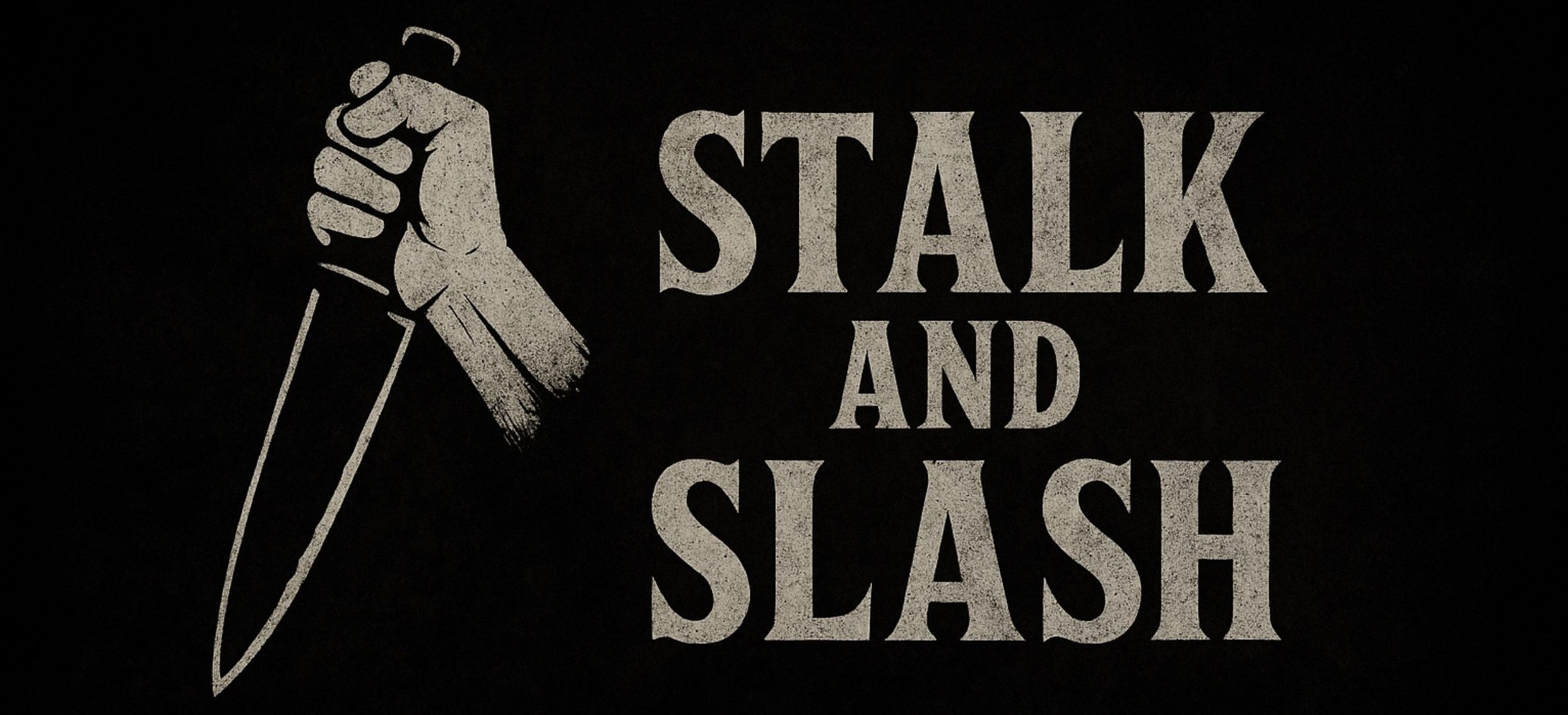Forty-Four Years Later and No One Has Topped the Werewolf Transformation in An American Werewolf in London
It has been forty-four years since An American Werewolf in London first howled its way into cinemas, and yet the film’s legendary transformation sequence remains the undisputed heavyweight champion of fur, fangs, and freak-outs. You can pump as much CGI into a werewolf film as you like, but no computer can recreate the raw, sinewy, bone-snapping majesty of watching David Naughton slowly and painfully become a beast before your very eyes — naked, screaming, and absolutely regretting that late-night stroll across the Yorkshire moors.
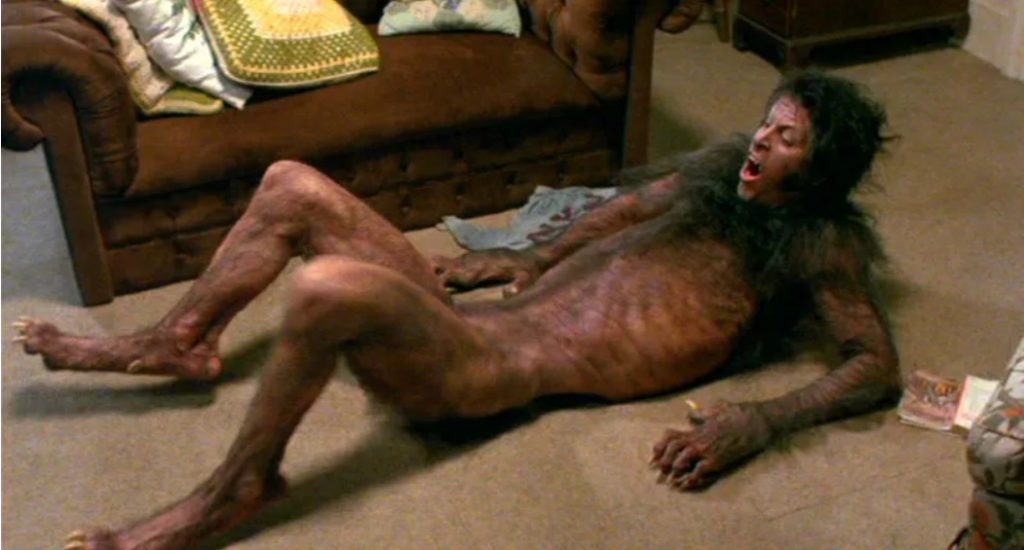
Directed by John Landis and brought to hairy life by make-up wizard Rick Baker, this 1981 masterpiece gave audiences something they had genuinely never seen before: a transformation that was not just horrifying but also deeply uncomfortable. You could feel it in your bones, the stretching of skin, the cracking of joints, the sprouting of fur like an explosion in a barber’s shop. It was the cinematic equivalent of going through puberty in fast-forward, but with more screaming and less acne.
What makes it so enduring, even today, is that it looks real. There is no digital gloss, no quick cut to hide imperfections, just an actor, a camera, and a crew of deranged geniuses armed with prosthetics, hydraulics, and more latex than a fetish convention. Baker and his team worked night and day, designing elaborate mechanisms that made Naughton’s face elongate, his hands stretch, and his body morph into a creature that was equal parts terrifying and awe-inspiring.
When the film premiered, audiences were left traumatised — not by gore, but by sheer disbelief. People genuinely thought, “How on earth did they do that?” The answer: time, patience, and a staggering amount of hair glue.
Now, before the other werewolves start sending angry letters, let’s be fair. The Howling, which came out the very same year, has some fantastic transformations too. Rob Bottin, another make-up effects legend, delivered some beautifully grotesque sequences — but where The Howling went for operatic horror with snouts stretching and eyes bulging like a werewolf-themed balloon animal, American Werewolf went for something far more visceral and personal. You felt David’s agony in every frame. It was not just a monster being born; it was a man being torn apart by nature itself, like a biology lesson gone horribly wrong.
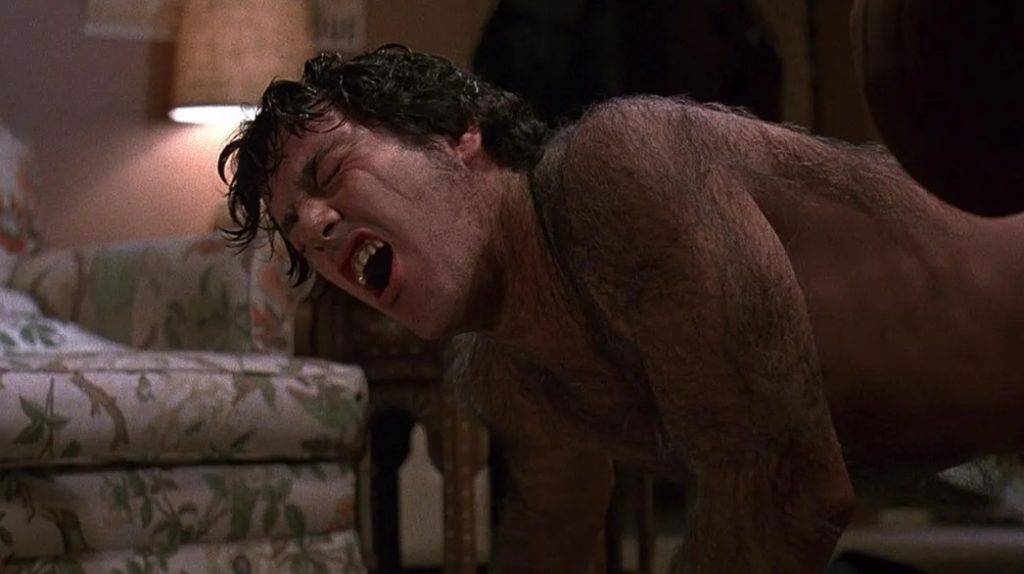
Then there’s Silver Bullet from 1985, which gave us a wonderfully grumpy priest who turns into a werewolf that looks suspiciously like an angry bear with a hangover. And Dog Soldiers (2002), bless it, remains one of the finest werewolf flicks ever made, giving us a pack of lanky lycanthropes that look like evil ballerinas in fur coats. Those designs are superb — menacing, physical, and gloriously British — but even with all their strengths, they still cannot hold a candle (or a full moon) to what Baker and Landis achieved in 1981.
You can tell how untouchable that transformation was because even Michael Jackson, arguably the most famous man on the planet at the time, took one look at it and said, “I’ll have some of that.” When he made his Thriller music video two years later, who did he call? John Landis and Rick Baker, of course. The result? Another jaw-dropping transformation scene that terrified a generation of children and made MTV very nervous. Jackson might have danced better than David Naughton, but even he could not out-howl him.
So why has no one topped it since? Simple: technology got in the way. The moment filmmakers discovered computers could render hair without having to glue it to an actor’s face for twelve hours, the art of physical transformation began to fade. Modern werewolf films — looking at you, The Wolfman remake — rely so heavily on visual effects that they lose the grit and pain that make transformations truly horrifying. CGI might be faster and cheaper, but it lacks that tactile horror that makes the audience wince and mutter, “Oh, that’s got to hurt.”
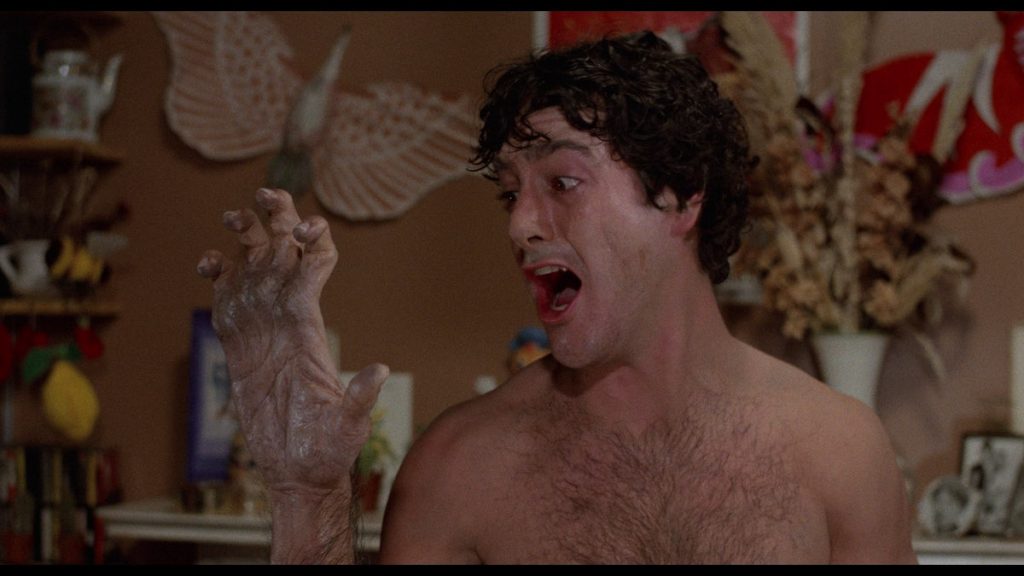
Watching a practical transformation like the one in An American Werewolf in London is a shared experience. You feel the pain of it, the sweat, the creaking bones. It is a slow burn, a beautifully choreographed descent into madness. Watching a digital transformation, by comparison, feels like watching someone update their profile picture. It might look slick, but it does not make your spine tingle.
There is also something wonderfully British about that scene. It happens in a quiet London flat, not a gothic castle or a misty forest. One moment you are minding your own business, the next you are tearing off your clothes, sprouting hair like an overwatered Chia Pet, and scaring the neighbour’s cat. It is horrifying, yes, but it is also oddly relatable. Who among us has not felt a bit beastly after a rough night out in Soho?
Rick Baker’s work went on to win the first ever Academy Award for Best Make-up, and deservedly so. It was a recognition not just of technical brilliance, but of sheer creativity and nerve. The scene remains so iconic that even now, four decades later, it is still being studied, imitated, and occasionally parodied — yet never surpassed.
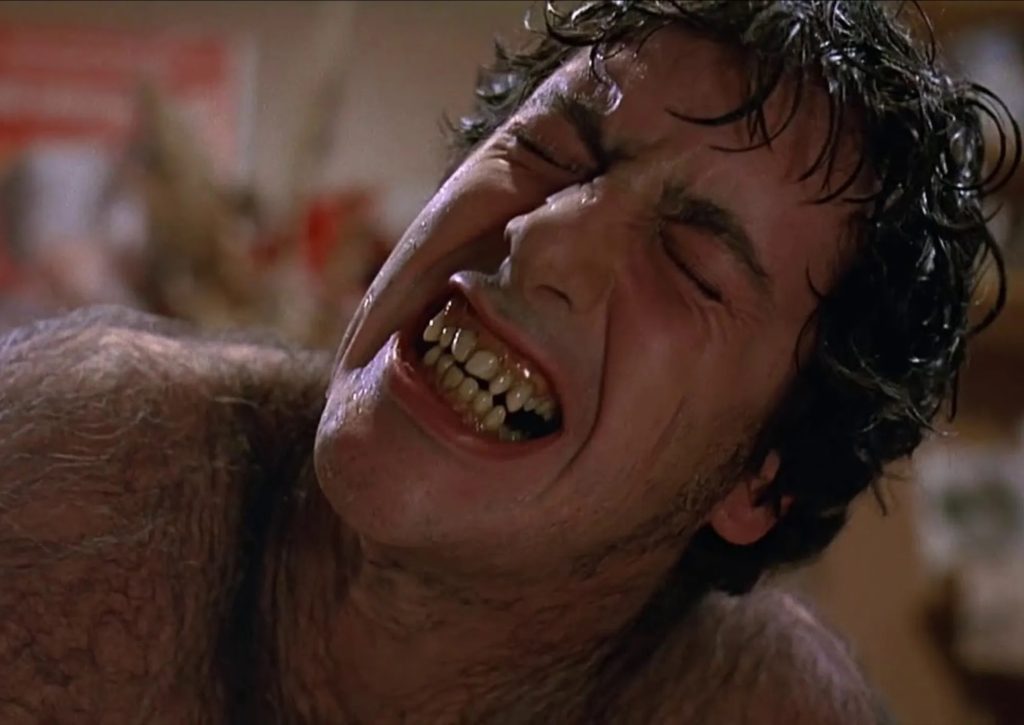
The truth is, An American Werewolf in London did not just set the bar for werewolf transformations; it bolted it to the ceiling and laughed at anyone who tried to reach it. Modern filmmakers can throw all the pixels in the world at their monsters, but they will never recapture that feeling of watching a human body rebel against itself in such agonisingly perfect detail.
Forty-four years later, Rick Baker’s masterpiece remains the king of transformations, the gold standard of lycanthropic agony. Everyone else is just playing catch-up — and judging by the state of modern CGI, they have a long way to go before they even grow a proper snout.
